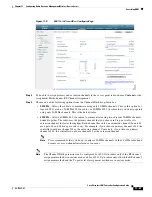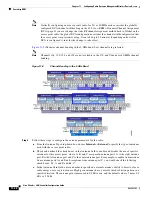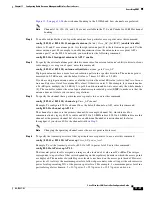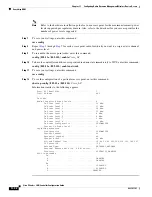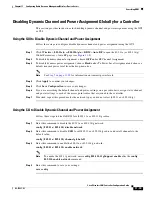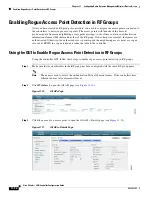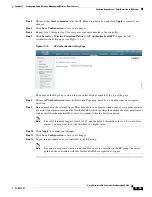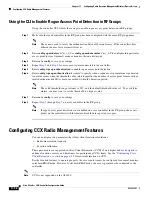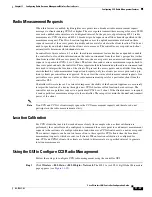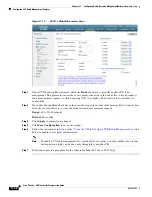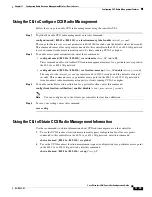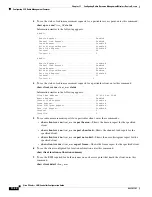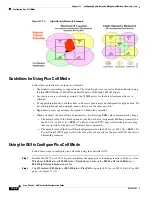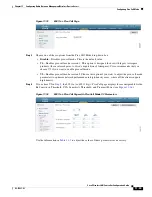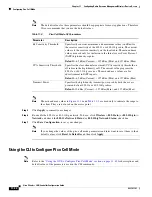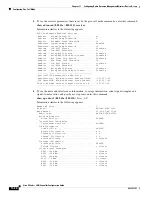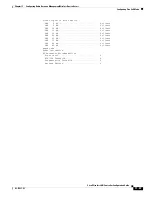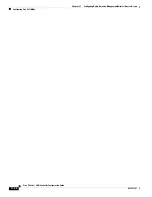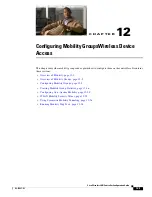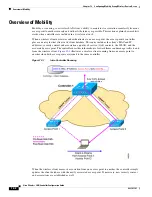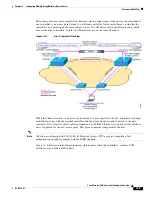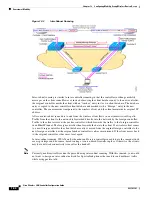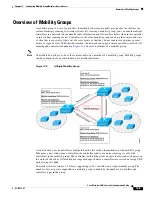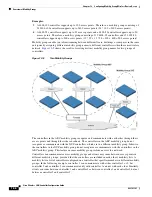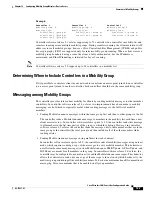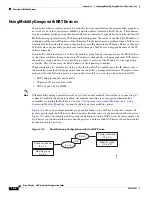
11-41
Cisco Wireless LAN Controller Configuration Guide
OL-17037-01
Chapter 11 Configuring Radio Resource ManagementWireless Device Access
Configuring Pico Cell Mode
Using the CLI to Debug CCX Radio Management Issues
Use these commands if you experience any CCX radio management problems.
1.
To debug CCX broadcast measurement request activity, enter this command:
debug airewave-director message
{
enable
|
disable
}
2.
To debug client location calibration activity, enter this command:
debug ccxrm
[
all
|
error
|
warning
|
message
|
packet
|
detail
{
enable
|
disable
}]
3.
The CCX radio measurement report packets are encapsulated in Internet Access Point Protocol
(IAPP) packets. Therefore, if the previous
debug ccxrm
command does not provide any debugs,
enter this command to provide debugs at the IAPP level:
debug iapp error {enable | disable}
4.
To debug the output for forwarded probes and their included RSSI for both antennas, enter this
command:
debug dot11 load-balancing
Configuring Pico Cell Mode
In large multi-cell high-density wireless networks, it can be challenging to populate a site with a large
number of access points to handle the desired cumulative bandwidth load while diminishing the
contention between access points and maintaining quality of service. To optimize RF channel capacity
and improve overall network performance, you can use the controller GUI or CLI to set high-density (or
pico cell) mode parameters.
These parameters enable you to apply the same receiver sensitivity threshold, clear channel assessment
(CCA) sensitivity threshold, and transmit power values across all access points registered to a given
controller. When a client that supports high density associates to an access point with high density
enabled, they exchange specific 802.11 information elements (IEs) that instruct the client to adhere to
the access point’s advertised receive sensitivity threshold, CCA sensitivity threshold, and transmit power
values. These three parameters reduce the effective cell size by adjusting the received signal strength
before an access point and client consider the channel accessible for the transfer of packets. When all
access points and clients raise the signal standard in this way throughout a high-density area, access
points can be deployed closer together without interfering with each other or being overwhelmed by
environmental and distant-rogue signals.
The benefits of a high-density-enabled wireless network include the following:
•
Most efficient use of the available spectrum
•
Significant increase in aggregate client throughput or throughput per square feet
•
Significant increase in wireless LAN capacity
•
Linear capacity growth
•
Higher interference tolerance by allowing WiFi to transmit over top of the interference
shows an example of a high-density network.

